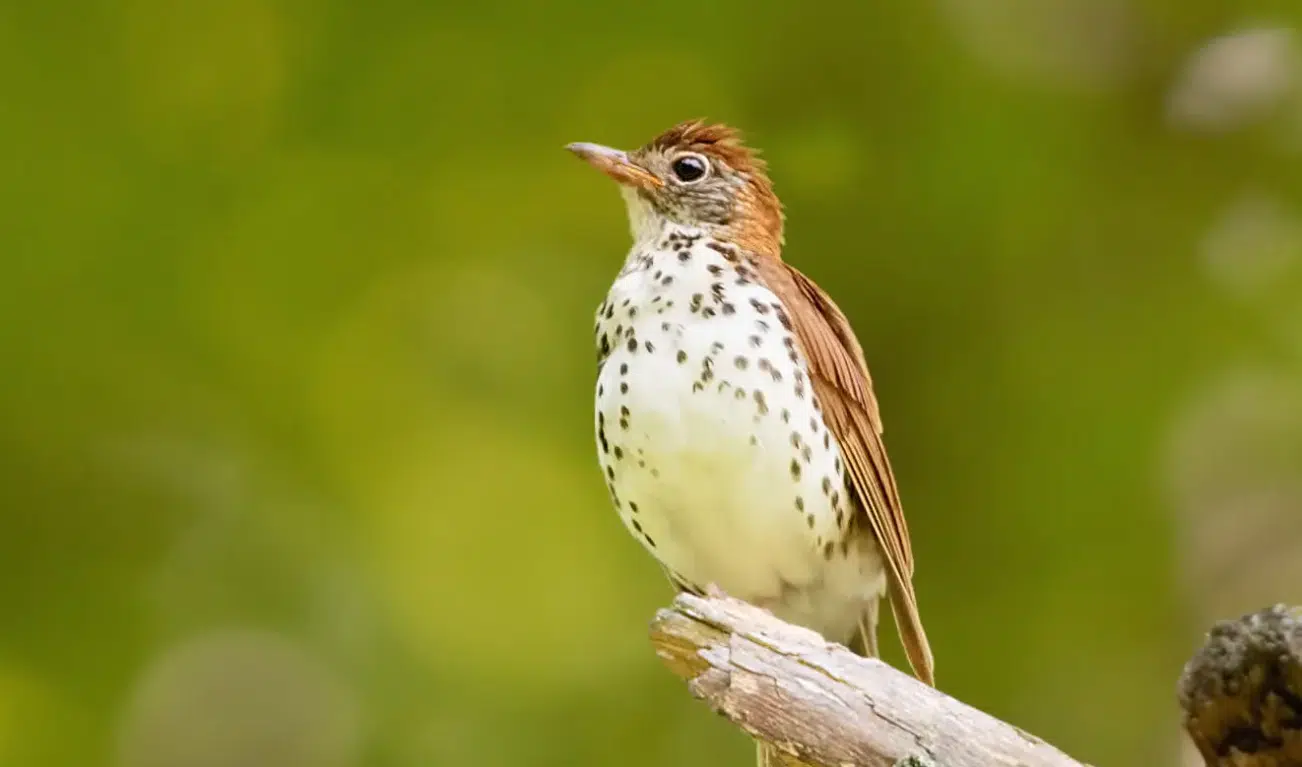Nature Profile
North America
Wood Thrush
Hylocichla mustelina

Wood Thrush
Voice: Song-a series of rich flute-like notes "ee-oh-lay." Call-a rapid "pit-pit-pit."
Considered one of the most common woodland birds of the east, wood thrushes are best known for their ethereal flute-like song. Their complicated syrinx (song box) allows them to sing two notes at the same time, harmonizing with their own voice. These large, heavily spotted thrushes are birds of the interior forest, seldom heard or seen outside the deep woods in Northeast Ohio, during the months of May through mid-September.
In the spring, males arrive from as far away as Costa Rica, to establish territories several days before the female arrives on the breeding ground. Their prime territory generally includes cool, dense understory, often near water with moist soil, and decaying leaf litter. Wood thrush pairs often return to the same breeding territory in consecutive years.
Once a territory and pairs are established, within 3 to 6 days later, females build an open cup nest of leaves and grasses. The middle layer of the nest is lined with mud. When the nest is almost complete, females line the inside with fine rootlets and dead leaves. The nest is generally on a lower limb of a tree or shrub in a hidden, shaded spot near or against the trunk or forked tree branch. 3 to 4 light blue eggs are laid daily, and are incubated by the female for 12-14 days. During this time, the young are equally tended to by both parents. They are fed small insects and some fruit. A pair of wood thrushes may raise more than one brood each season. When the first brood fledges, both parents feed all the young. However, when the last brood fledges, the parents divide the feeding work, each parent caring for half the brood. The young then leave the nest in 12-13 days.
Around 20 days, the young feed themselves by foraging under the forest canopy. They learn from their parents how to hop and pause, then how to scatter leaves to find prey. Sometimes they can hawk, hover, and glean insects or fruit from vegetation above the ground. Their main diet includes beetles, ants, moths, caterpillars, millipedes, and isopods. In the late summer and fall they eat more fruit including spicebush, holly, elderberry, Virginia creeper, pokeweed, dogwood, black cherry, and black gum.
Even though the wood thrush is one of the most common species found in Eastern forests, they are of a high conservation concern, and are listed on the National Audubon Society Bird Watchlist. Steady population decline throughout most of their range has caused the wood thrush to declined 43% overall since 1966. The decline in population has been linked to acid rain and forest fragmentation by studies conducted by the Cornell Lab of Ornithology's Bird population. Help protect the wood thrush and other forest interior birds by supporting efforts to preserve large tracts of forests in your area.




